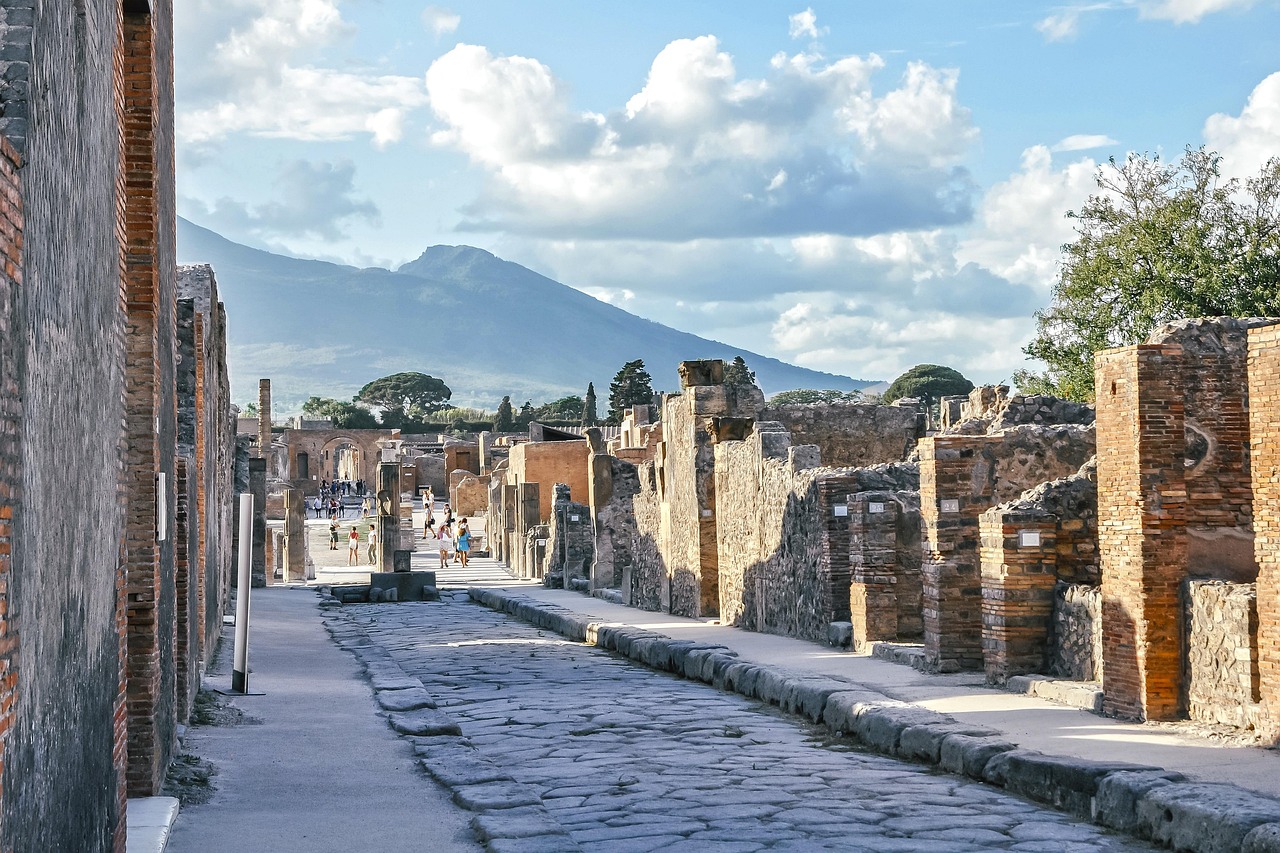Walking through the stone streets of Pompeii really does feel like stepping into a time machine.
The ancient city, frozen by Mount Vesuvius’s eruption, lets us peek into everyday Roman life almost 2,000 years ago.
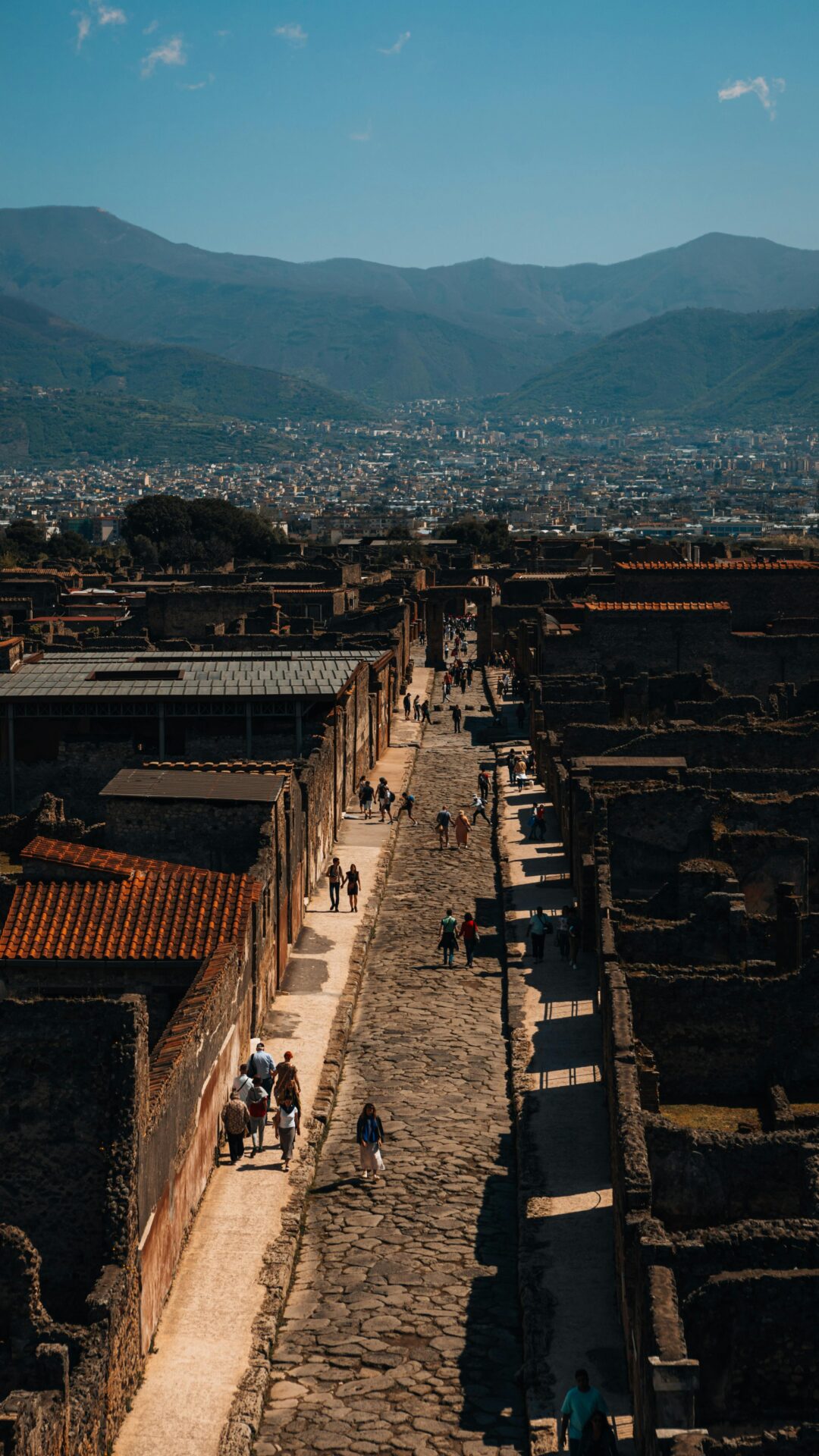
These well-preserved streets reveal how people lived, worked, and moved, with clever pedestrian crossing stones that kept their feet clean—no small thing in a city with messy roads.
When I visited Pompeii last year, the smart design of the streets amazed me.
Stepping stones let folks cross without dirtying their sandals, but carts could still roll through thanks to the careful spacing.
During the HORA QUARTA (between 8:13-9:29 am), the streets filled with sellers and shoppers, and the forum turned into a lively social hub.
Main roads like Via dell’Abbondanza and Via Stabiana formed the economic core of ancient Pompeii.
These roads weren’t just for getting from A to B—they acted as community spaces where Romans chatted, struck deals, and built relationships.
You’ll spot deep wheel ruts carved into the stone, marking the endless trips Romans made along these routes.
Strolling the Roman Streets: Daily Life Unveiled
Walking the streets of Pompeii gives you a window into Roman daily life, frozen in a single, tragic moment.

The city’s maze of roads, homes, and shops shows how ordinary people worked and lived in this busy town.
Footsteps on the Via dell’Abbondanza
The Via dell’Abbondanza was Pompeii’s main commercial street, stretching from the Forum to the Sarno Gate.
When I walk this ancient thoroughfare, those deep wheel ruts in the stone remind me of all the carts that once rolled by.
Shops, homes, and workshops line the street.
Many buildings greet you with mosaic entrances—some welcoming, others meant to ward off trouble.
Stepping stones across the street kept pedestrians’ feet dry and clean.
Floods from rain or street cleaning made these stones a daily necessity.
Sidewalk fountains once drew residents to gather water, and probably to gossip a little too.
Everyday Life Along the Main Thoroughfares
Pompeii’s streets acted as extensions of the home.
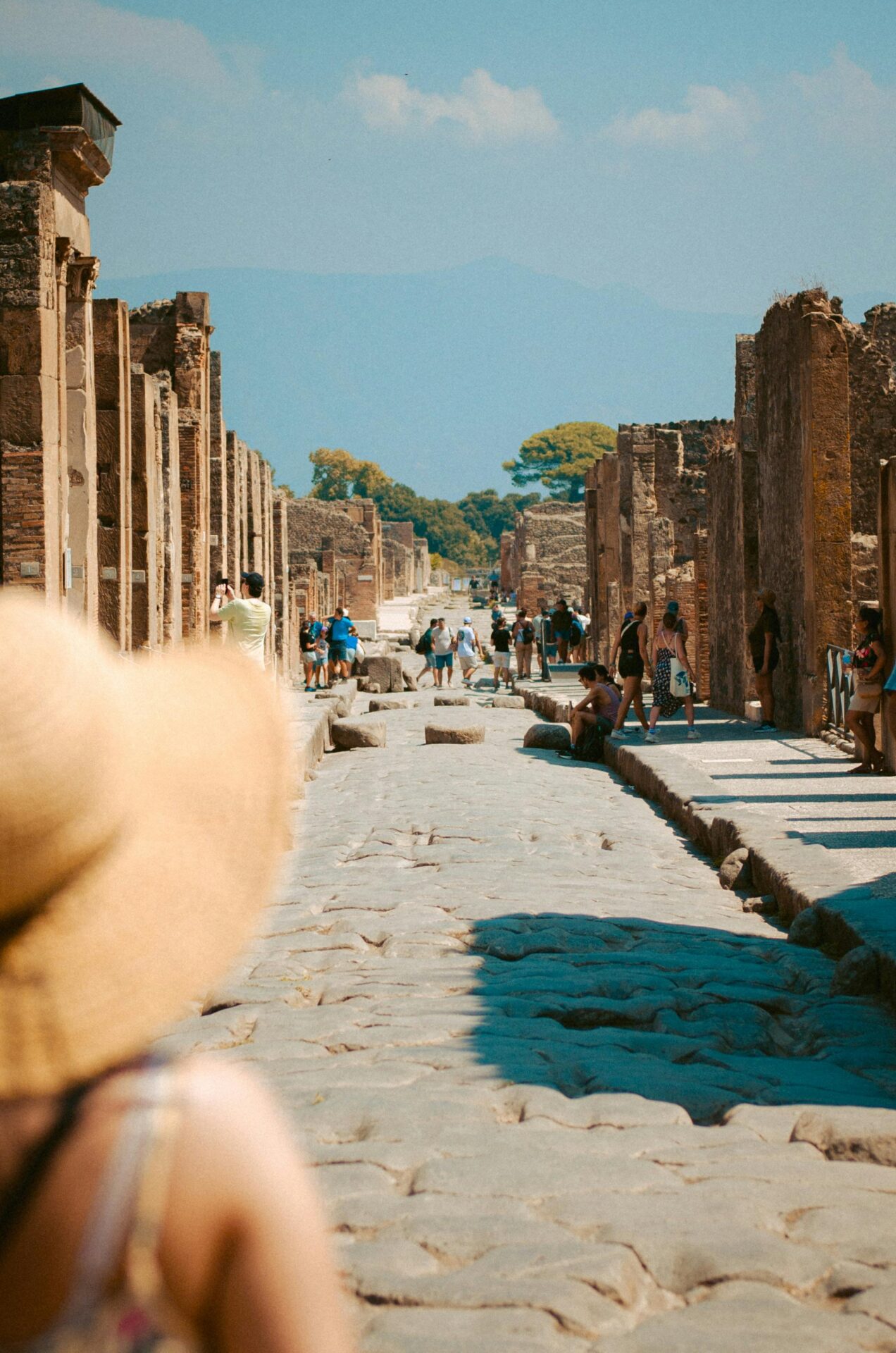
While exploring, I noticed how public and private life blended right at the doorstep.
Many houses had tabernae—shops built right into their street-facing walls.
Families sold goods to passersby, living just behind or above their businesses.
Food and drink spots called thermopolia dotted the city.
Large jars set into stone counters held ready-to-serve meals and drinks.
Street shrines to the Lares Compitales—the neighborhood spirits—showed how religion and daily routines mixed.
At night, the streets went dark except for oil lamps in windows or those carried by the wealthy and their slaves.
Street Vendors and the Bustle of Commerce
Commerce thrived in Pompeii’s streets.
Street vendors set up temporary stalls, selling everything from food to clothing.
I can almost hear merchants calling out, tempting customers with fresh produce, pottery, and textiles.
Painted ads on walls promoted businesses.
Specialized neighborhoods popped up—fulleries clustered together, as did bakeries and metalworkers.
Market days brought even more hustle as farmers arrived from the countryside to sell goods in the forum and along busy roads.
Coins scattered across the city prove how everyday transactions happened—small bronze coins for daily buys, larger silver ones for bigger deals.
Bars and taverns buzzed with life, drawing people from all walks to share wine and stories.
Inscriptions and Graffiti: Voices From the Past
Pompeii’s walls still talk through their graffiti and inscriptions.
These scribbles give us some of the most personal glimpses into Roman life.
Electoral slogans splash across exterior walls—“Vote for Lucius! He bakes good bread!”
Politics unfolded out in the open, with candidates boasting of their skills.
Personal messages run the gamut from romantic to crude.
I love stumbling on things like “Successus, the weaver, loves Iris, the innkeeper’s slave girl” scratched into a wall.
Business ads get straight to the point: “The slave girl Vitalis of Nuceria sells drinks for one as. For a better one, you’ll pay two. For wine from Falerno, four.”
Some folks even scratched market prices or accounting notes into plaster.
Reading these, I can’t help but feel the humanity—hopes, jokes, and worries, so much like our own.
Homes and Households: Behind Pompeii’s Doors
Stepping inside Pompeii’s homes gives you a close-up look at Roman family life.
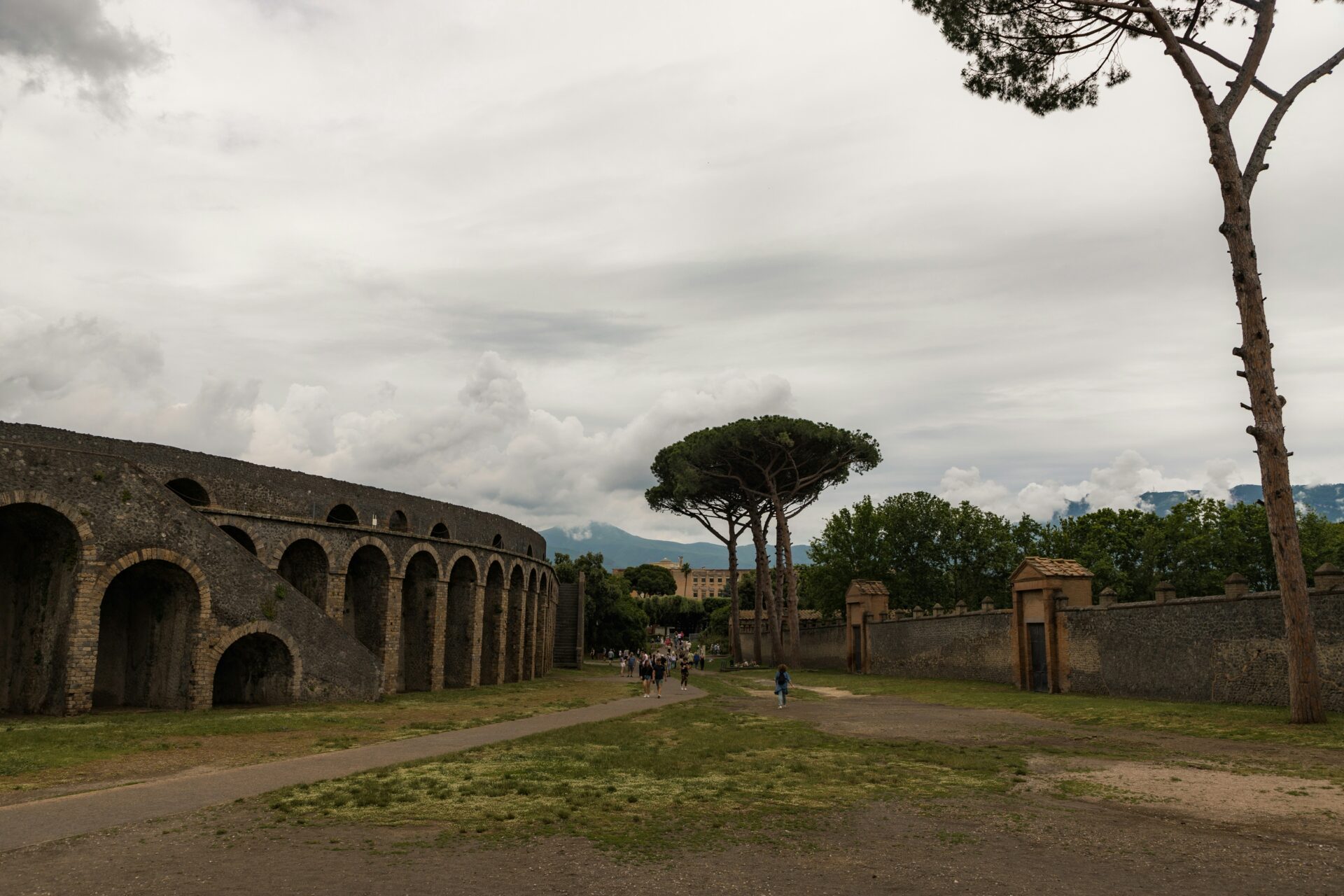
These dwellings reveal stories of hierarchy, taste, and daily rhythms, all frozen when Vesuvius erupted.
The Roman domus: Layout and Decor
The typical Pompeian domus followed a distinctive layout that mirrored the family’s status.
I noticed most homes centered around an atrium—a hall with a roof opening and a little pool, the impluvium, to catch rainwater.
Wealthier families added a peristyle garden ringed with columns.
These houses included a tablinum (office) where the paterfamilias did business and received guests.
What really struck me was how Pompeian homes turned inward.
Plain outer walls with few windows hid vibrant, decorated interiors—a private world away from the noisy street.
You’d enter through a narrow fauces, a passage leading straight to the heart of the home.
Some houses combined shopfronts with living quarters, blending business and family life.
Mosaic Floors and Painted Frescoes
Walking through these homes, the mosaic floors caught my eye.
Some were simple patterns, others showed off animals or mythological scenes.
The famous “Cave Canem” (“Beware of Dog”) mosaic in the House of the Tragic Poet is both a warning and a bit of flair.
Walls burst with colorful frescoes.
Pompeian wall paintings fall into four main styles, each marking a different era or artistic trend.
Murals often showed landscapes, myths, or trompe l’oeil effects that fooled the eye.
What surprised me most? Even middle-class homes boasted some art.
The amount and quality of decoration made it pretty clear who had money and who didn’t.
Family, Slaves, and Roles Within the Household
The Roman household ran on a strict hierarchy.
The paterfamilias held legal power over everyone, while the materfamilias managed domestic affairs and supervised slaves.
Slaves did most of the work in richer homes.
Passing through cramped slave quarters, I couldn’t ignore the stark inequality.
Women mostly ran the household, raised kids, and did textile work.
Weaving tools pop up in many homes, showing women of all classes kept busy with cloth.
Kids learned at home until boys were old enough to follow their fathers to the forum.
Girls picked up domestic skills from their mothers.
Lower-class families usually lived in small apartments above their shops.
Gardens and Domestic Life
The garden (hortus) played a big role in Pompeian homes.
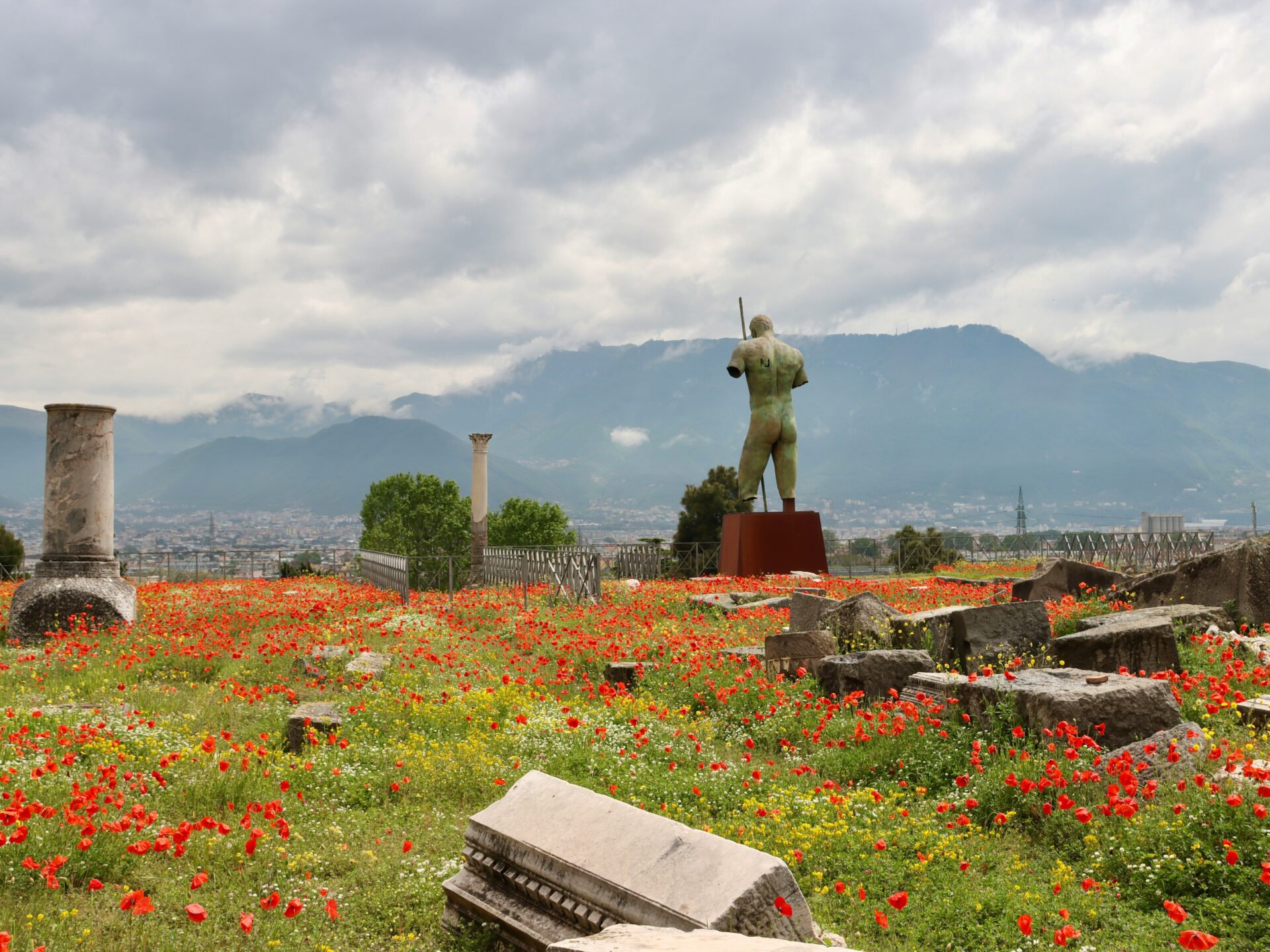
I imagine families gathering there to escape the Mediterranean heat.
Archaeologists have figured out what grew in these gardens by studying root and seed impressions.
Families grew herbs, fruits, and veggies for the kitchen, along with flowers for beauty.
Peristyle gardens in bigger homes had fountains, statues, and spots for outdoor dining.
These gardens became living rooms in nice weather, perfect for entertaining guests.
Small shrines to household gods (lararia) often sat here, blending daily life with spiritual practice.
For Pompeians, gardens offered a slice of nature in the city—a place for food, beauty, and a bit of peace.
Public Spaces and Social Life: Where Romans Gathered
Pompeians built their social lives around public spaces that held the community together.
These gathering spots became vital for business, government, worship, and just hanging out.
Forum: Civic Heartbeat of Pompeii
Stepping into Pompeii’s forum now, I try to picture the buzz of activity when it was the city’s central marketplace and meeting spot.
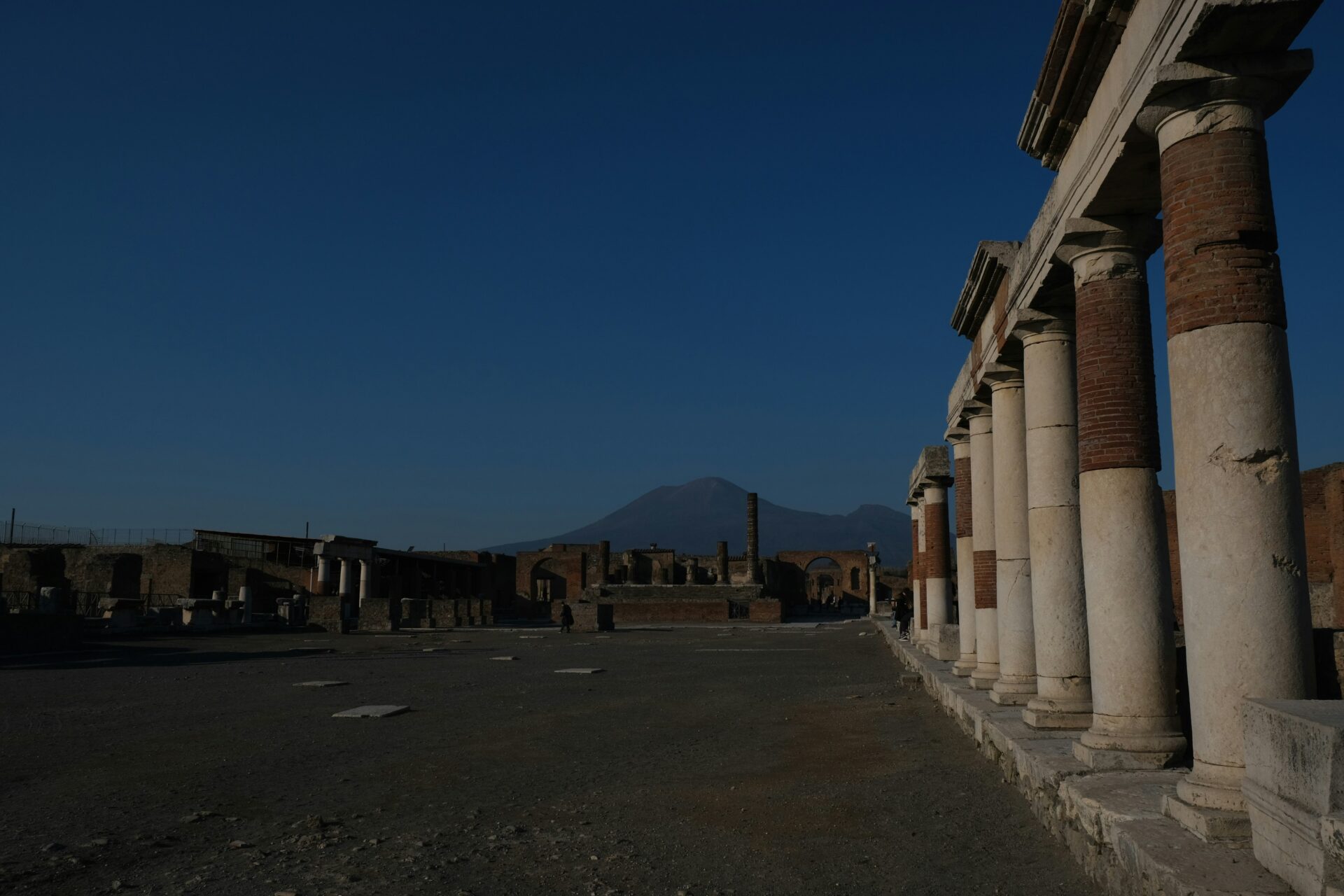
Important buildings surrounded this plaza, making it the heart of Pompeian public life.
Merchants sold goods while citizens swapped news and discussed politics.
Government buildings, temples, and the basilica stood around the square.
The forum wasn’t just about business.
People met friends, socialized, and made themselves known.
Ambitious young men hoping for political careers strolled the forum, looking for support from the city’s movers and shakers.
Temples and Religious Rituals
Religion shaped every day in Pompeii.
Temples dedicated to different gods dotted the city.
The Temple of Apollo near the forum stands as one of the oldest and most important.
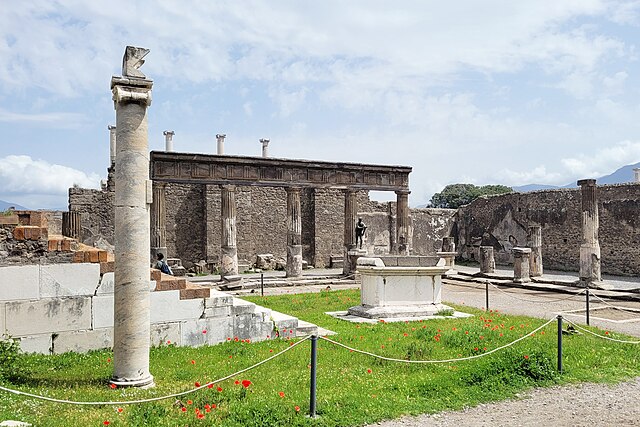
Image Source: Wikimedia Commons
When I visit these sacred places, I remember that religion meant community.
Pompeians gathered for public rituals, festivals, and sacrifices, believing the gods protected them.
Religious processions wound through the streets, blending faith with social display.
Sometimes, people freed slaves at temples, showing how religion and civic life overlapped.
These sacred buildings really did stand at the crossroads of daily life.
Comitium and Local Governance
The comitium, tucked near the forum, was Pompeii’s political nerve center.
I can almost hear the echoes of debates and public gatherings.
Locals elected officials here, casting votes and voicing opinions.
Walls still bear electoral graffiti—ancient campaign ads urging support for various candidates.
Pompeiians managed their own affairs under Roman rule.
Officials settled disputes and kept order from this spot.
What gets me is how direct civic participation was.
Eligible citizens didn’t just watch—they got involved and shaped their city.
Entertainment, Baths, and Leisure: Living the Good Life
Pompeii’s Romans knew how to enjoy themselves.
As I walk through the city, I see so many places where people gathered to relax, socialize, and catch a show after work.
Amphitheater: Gladiators and Spectacles
Pompeii’s amphitheater is one of the oldest surviving Roman arenas, built around 70 BCE.
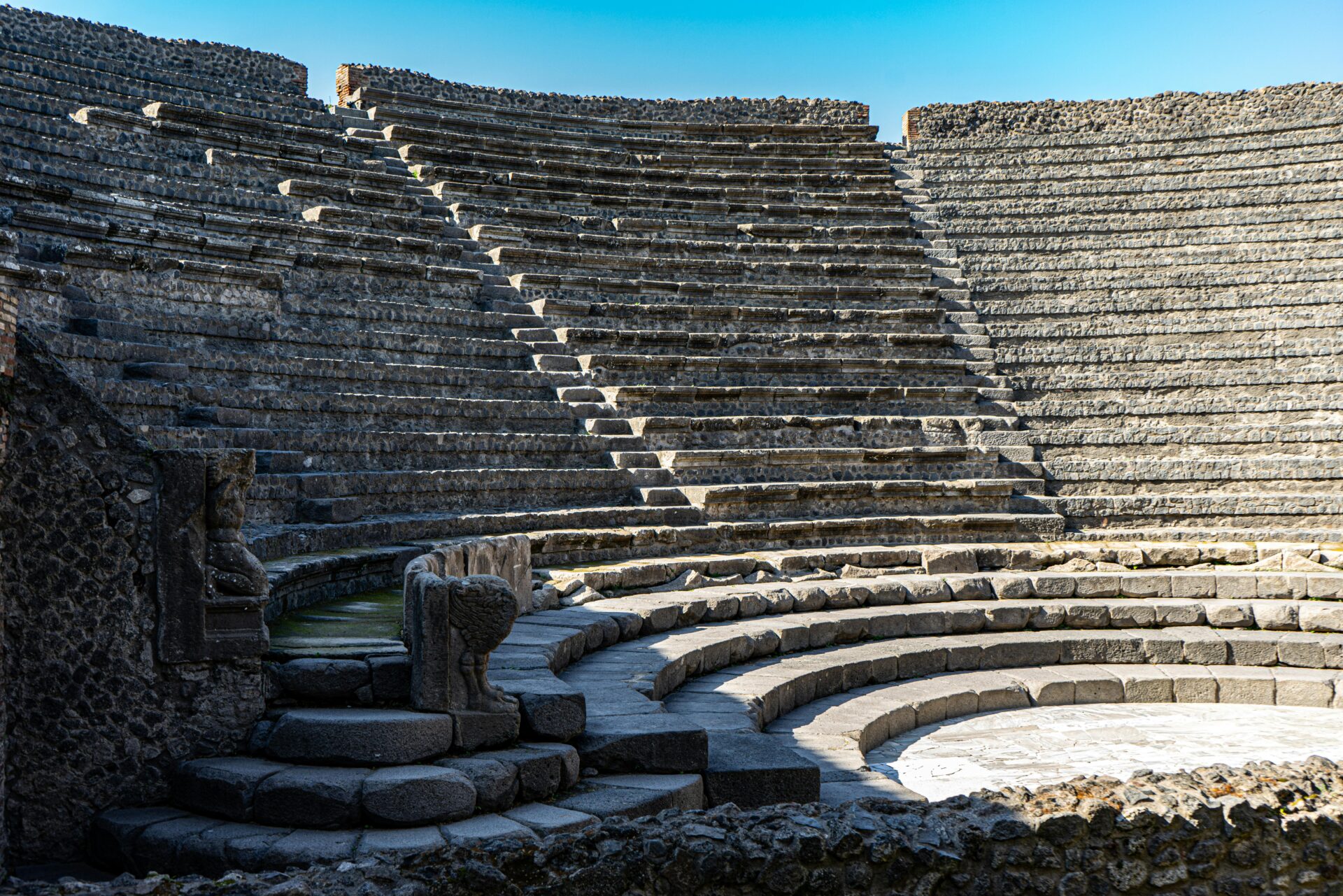
It’s huge—room for about 20,000 spectators, which means the whole city could show up!
Gladiators fought each other or wild animals in elaborate games with strict rules.
Walking the corridors, I can almost hear the crowds.
In 59 CE, a riot broke out between Pompeians and Nucerians during the games.
Things got so bad Emperor Nero banned games for ten years.
Romans took their entertainment seriously.
Families from all backgrounds came together for these events.
Theater: Dramatic Arts and Festivals
Pompeii had two theaters for plays and performances.
The big one, Teatro Grande, seated about 5,000 people under the open sky.
I love picturing comedies, tragedies, and mimes performed here, actors in masks, music echoing through the seats.
The smaller Odeon hosted music and poetry for those who preferred something a bit more refined.
These weren’t just shows—they were community gatherings.
Performances often matched up with religious festivals for gods like Apollo or Dionysus.
Entertainment and religion went hand in hand.
Thermal and Public Baths
The baths were the true heart of Pompeii’s social life.
I’ve wandered through the Forum Baths, Stabian Baths, and Central Baths, marveling at their clever heating and beautiful mosaics.
A typical bath complex included:
- Tepidarium (warm room)
- Caldarium (hot room)
- Frigidarium (cold room)
- Palaestra (exercise yard)
Romans visited daily, not just to get clean but to chat, do business, and unwind.
Bathing meant a whole routine—exercise, hot pools, then a cool dip.
Most baths had separate areas for men and women, or different hours.
Even ordinary folks could afford this luxury.
Daily Indulgences and Social Rituals
Pompeians really embraced life’s pleasures.
Thermopolia—what we’d call fast-food joints—served hot meals and wine to people on the go.
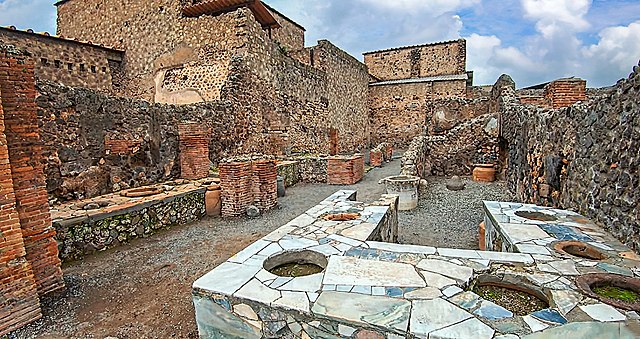
Image Source: Wikimedia Commons
Wealthy families threw dinner parties, called convivia.
Guests reclined on couches, enjoying course after course, wine, and entertainment.
Board games were a favorite pastime.
I’ve spotted game boards scratched into stone benches around the city.
People played dice and a checkers-like game called latrunculi.
Graffiti on the walls shows how much they enjoyed life.
One famous line reads: “Baths, wine, and sex spoil our bodies, but they make life worth living.”
Commerce, Work, and Agriculture: The Economic Pulse of Pompeii
Pompeii thrived as a lively economic hub where agriculture, trade, and craftsmanship came together.
Its spot near the Bay of Naples made it a key commercial center where merchants, farmers, and artisans made their living.
Shops, Markets, and Trade Networks
Walking Pompeii’s main streets, I’m struck by the sheer number of shops.
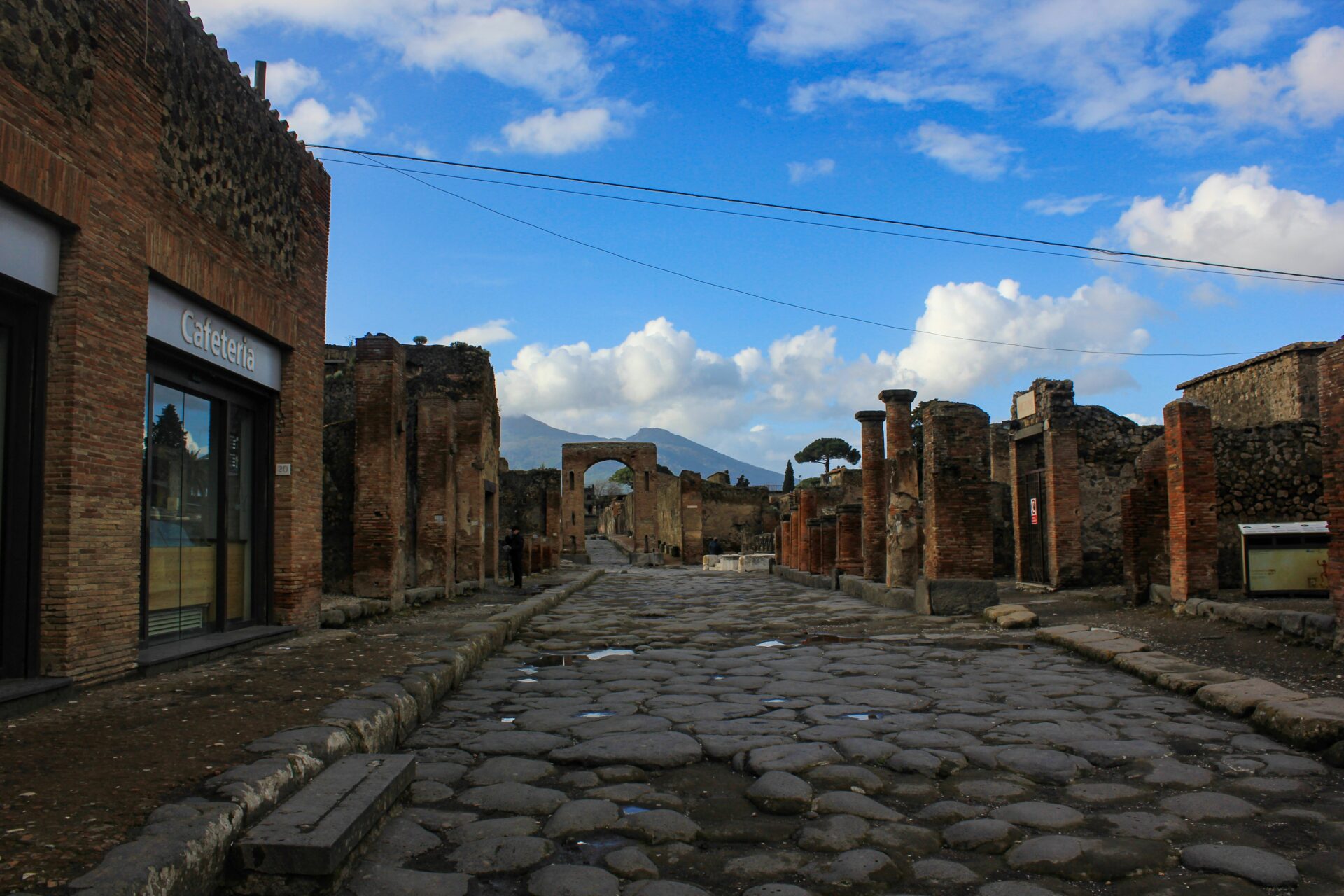
Thermopolia (ancient fast-food joints) served up hot food and drinks for busy folks who didn’t cook at home.
Many still show off their stone counters with built-in pots.
The forum acted as the main marketplace, where merchants sold imports from across the Mediterranean.
Pompeii’s harbor linked it to trade routes stretching to Egypt, Spain, and Greece.
Olive oil, wine, and garum (fish sauce) were big exports that brought in wealth.
Bakeries pop up everywhere, easy to spot thanks to their millstones and ovens.
Bread was a daily staple—no surprise there.
Agriculture and the Gifts of Volcanic Soil
The rich volcanic soil around Vesuvius made the land perfect for growing crops.
Vineyards covered the countryside, producing wines that became famous across the empire.
I’ve seen villa rustica (country estates) on the outskirts, acting as farm centers.
Olive groves stretched as far as the eye could see, providing oil for cooking, lighting, and even hygiene.
Many homes had gardens for veggies and herbs.
Archaeology shows wheat, barley, fruits, and nuts grew in abundance.
All that fertile soil fed the city and created surpluses for trade.
Clothing, Crafts, and Services
Textile work thrived in Pompeii.
I visited the fullonica of Stephanus—a laundry where workers cleaned wool using human urine (seriously!) and fuller’s earth.
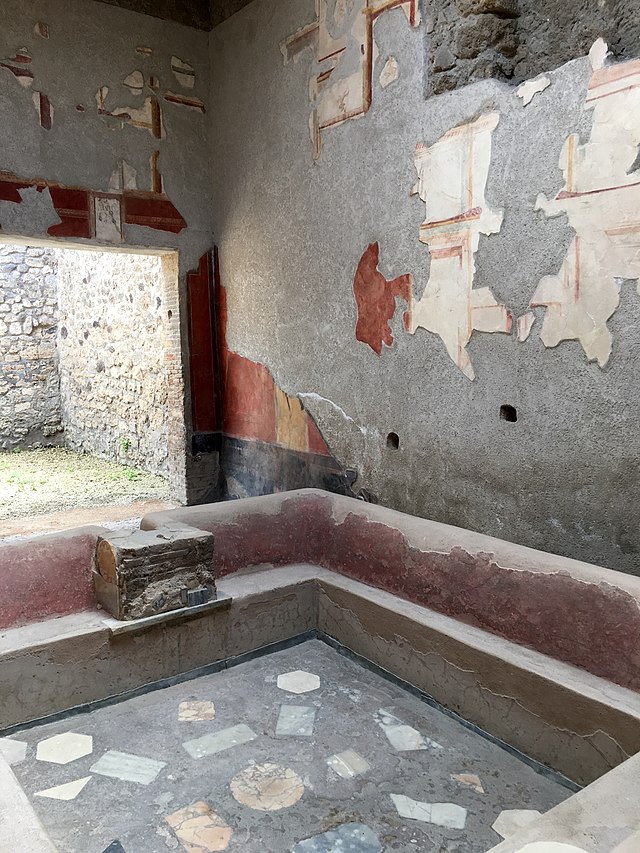
Image Source: Wikimedia Commons
You can still see the big vats for washing and pressing.
Craftspeople set up workshops everywhere, making jewelry, pottery, and more.
Bronze workers, carpenters, and masons formed guilds to protect their trades.
Service jobs also did well.
Baths needed attendants, and wealthy homes hired servants.
Street vendors sold snacks and small goods to passersby.
Women played a big part, especially in textiles and retail.
I found it fascinating that some female business owners left their names on shop signs and in surviving records.
Catastrophe and Rediscovery: From the Eruption to Today
Pompeii’s story is one of both destruction and preservation.
The eruption that buried the city gave us an archaeological treasure—a rare window into ancient daily life.
Eruption of Vesuvius and Its Impact
On August 24, 79 AD, Mount Vesuvius erupted with terrifying force.
The peaceful Roman town barely had any warning before disaster struck.
Standing on those streets, I try to imagine the panic as ash and pumice rained down.
Many people escaped, but thousands got trapped.
The city disappeared under 15-20 feet of volcanic debris.
What’s wild is how this tragedy preserved Pompeii almost perfectly.
Food left on tables, graffiti on walls—so many details survived.
Before the big eruption, earthquakes had already damaged the city.
Many buildings were still being repaired after a major quake sixteen years earlier.
People here lived with constant threats from nature.
But in the end, the preservation left us a city frozen in time.
Archaeological Finds and Ongoing Research
My first visit to Pompeii’s excavations left me awestruck at how much archaeologists have uncovered since digging began in 1748.
Early digs were more like treasure hunts than science.
Now, researchers use ground-penetrating radar and DNA analysis.
Archaeologists keep finding things that change what we know about Roman life.
The plaster body casts of victims are especially moving.
When volcanic debris hardened around bodies, it created molds.
Pouring plaster in reveals their final moments—haunting, but so human.
Recent discoveries include:
- Preserved food showing Roman diets
- Frescoes that still look bright
- Graffiti with political opinions and daily gossip
- Tools and household items showing off Roman tech
Herculaneum and Pompeii Archaeological Park
Walking through the Pompeii Archaeological Park is an experience I can’t recommend enough.
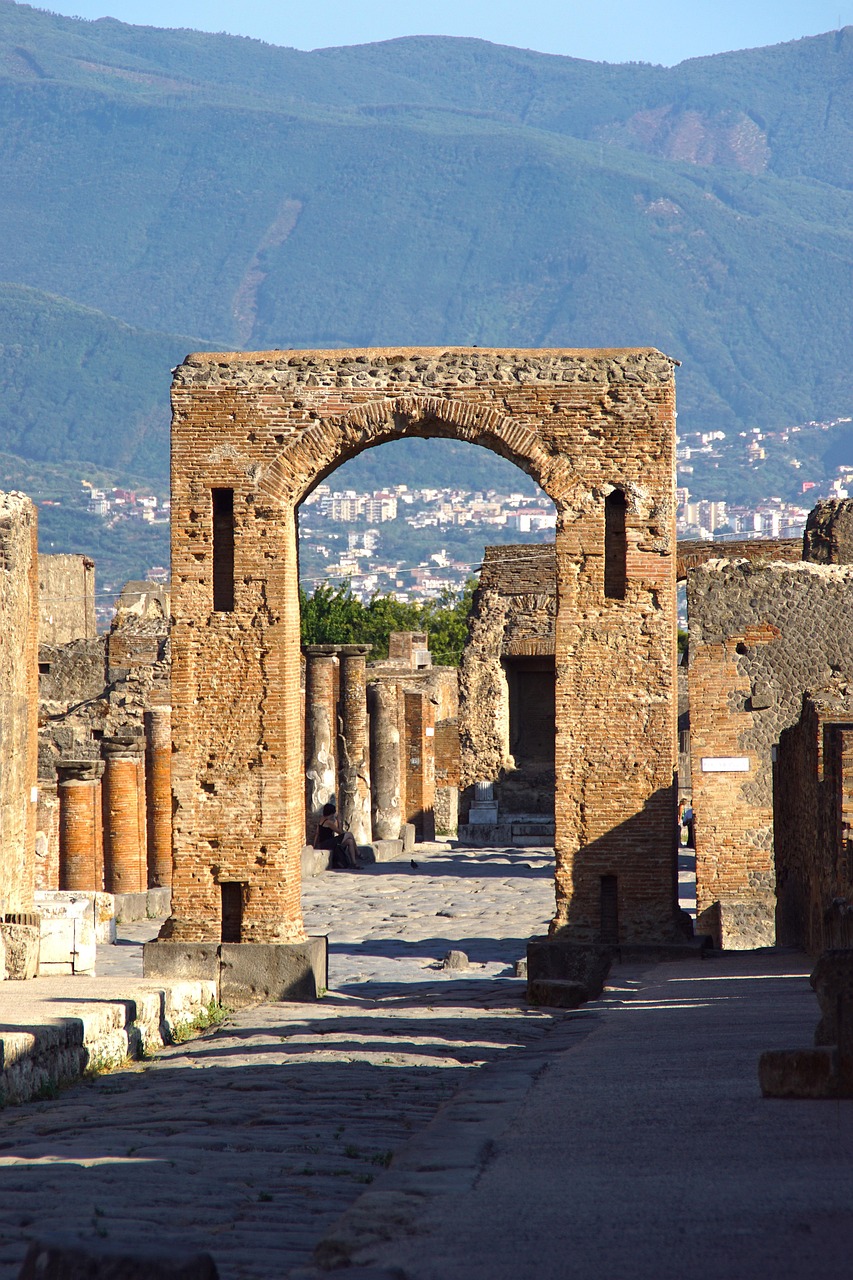
The site covers about 170 acres, though only about two-thirds is excavated.
Nearby Herculaneum offers a different take.
While Pompeii got buried in ash, Herculaneum was hit by pyroclastic flows that preserved wood and food.
UNESCO status helps protect these sites for the future.
Conservators now work to keep them safe from weather, tourism, and time.
If you visit:
- Get there early to beat the crowds and heat
- Bring water and comfy shoes
- Consider a guide for extra insight
- Spring or fall is the best time to go
Lessons From the Ruins: Connecting With Ancient Rome
Standing in Pompeii’s forum, I’m always surprised by how familiar it feels.
Shops, homes, and public spaces show people not so different from us.
The disaster locked away details of daily life that we’d otherwise never see.
We can spot their favorite foods, entertainment, and even political debates.
Pompeii teaches us about urban planning and architecture.
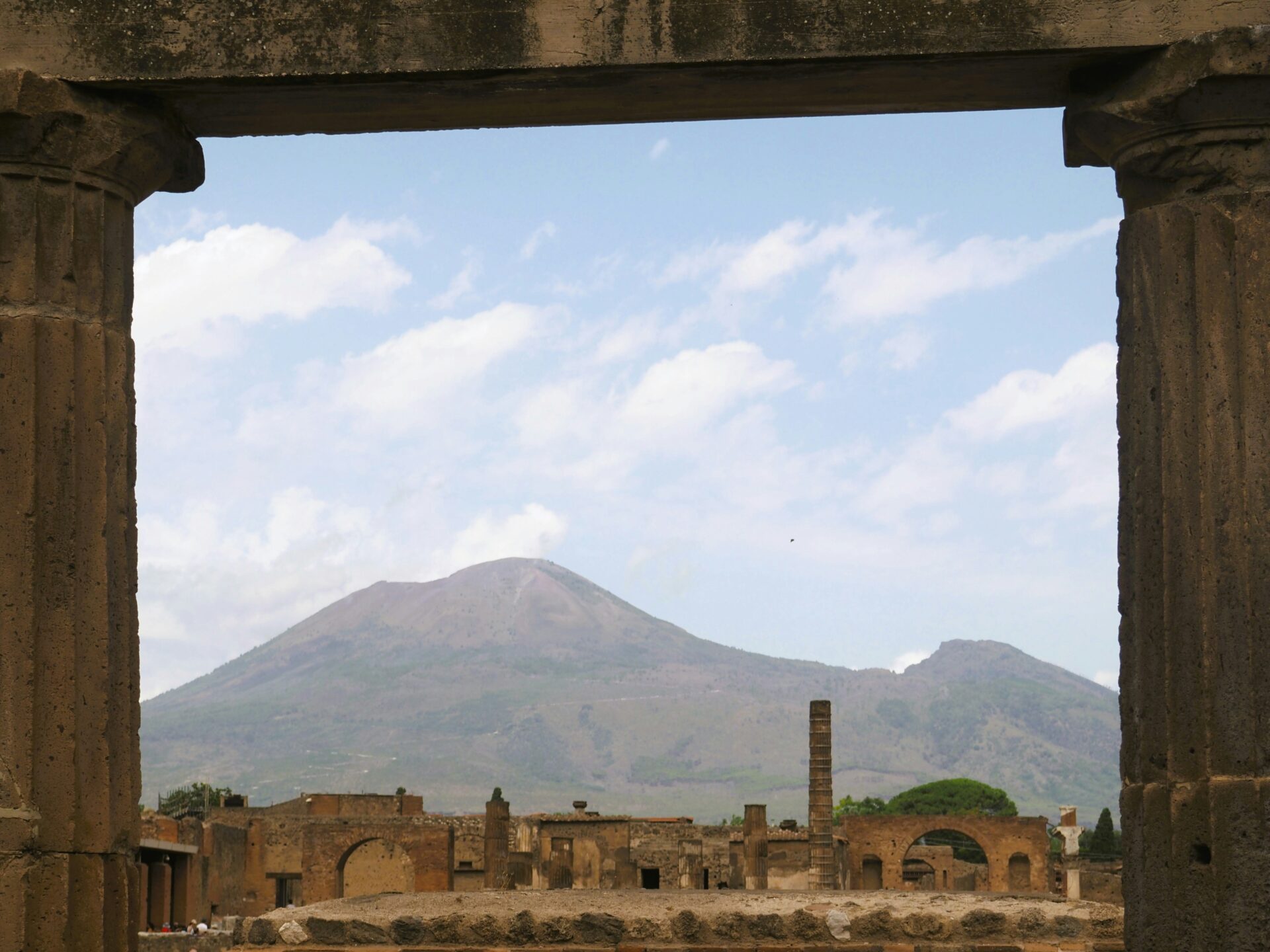
Romans built advanced water systems, street layouts, and sturdy buildings.
The ruins also remind us how powerful nature can be—and how quickly things can change.
Walking these streets, I feel both humbled and grateful.
Without Vesuvius’s eruption, we’d never know this much about ancient life.

